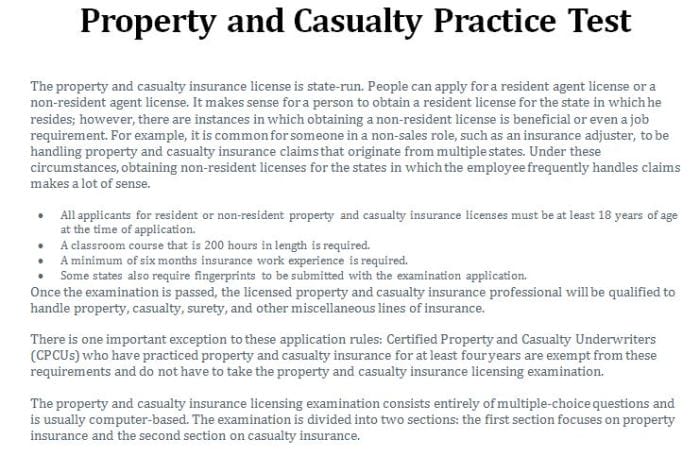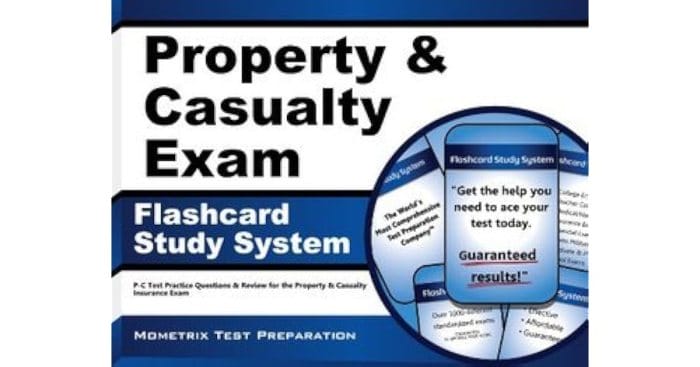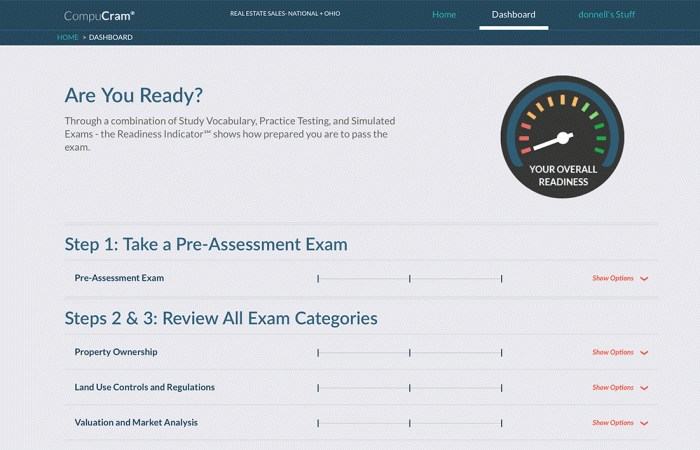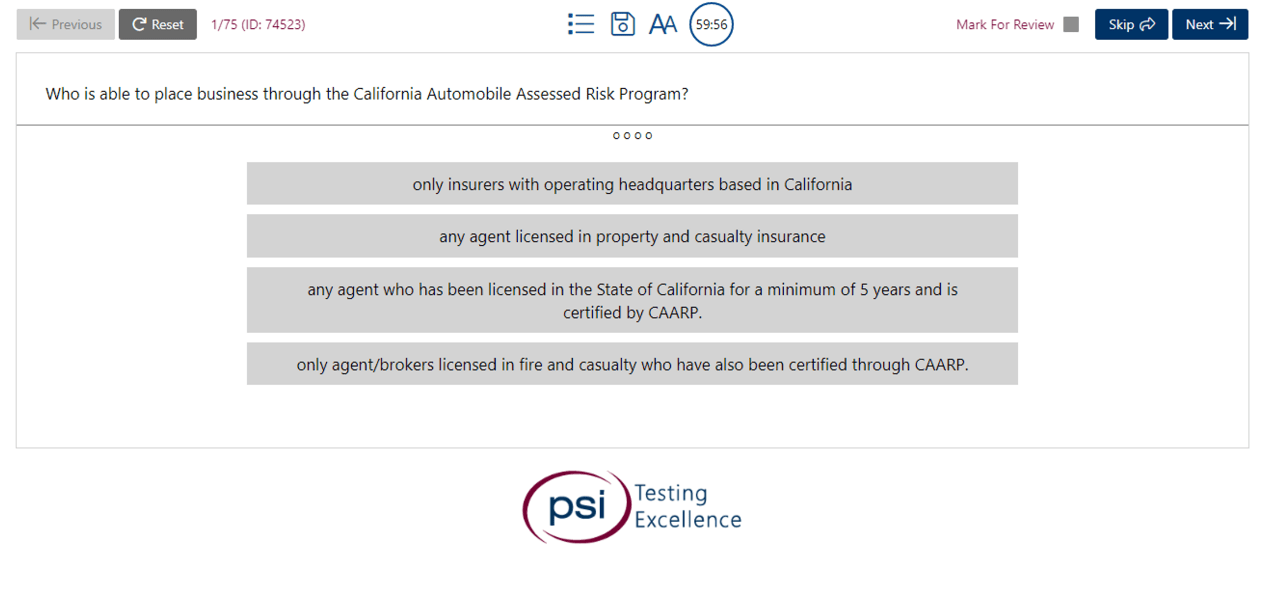In the realm of risk management, property and casualty insurance stands as a guardian against unforeseen events that threaten our assets and livelihoods. Embark on a journey through the intricacies of this insurance domain, where we uncover the secrets to excelling in property and casualty insurance exams.
From deciphering complex policy language to navigating the claims process with finesse, this guide equips you with essential knowledge and strategies to conquer any property and casualty insurance exam. Prepare to delve into the depths of risk assessment, coverage options, and underwriting principles, emerging as a master of this specialized insurance field.
Insurance Policy Comprehension

Understanding the intricacies of your property and casualty insurance policy is paramount to ensuring adequate protection for your assets and minimizing potential coverage gaps. It’s essential to delve into the policy’s terms, conditions, and coverage limits, deciphering complex language and identifying key clauses that impact coverage.
Thorough Policy Review
Begin by thoroughly reviewing your policy document, paying close attention to the following aspects:
- Policy Declarations: This section provides an overview of your coverage, including the insured property, policy limits, and premium information.
- Covered Perils: Clearly understand the specific events or hazards covered under your policy, such as fire, theft, or natural disasters.
- Exclusions: Be aware of any exclusions or limitations that may apply to your coverage, as certain losses or damages may not be covered.
- Policy Limits: Determine the maximum amount your insurer will pay for covered losses, as exceeding these limits may leave you financially responsible for the remaining costs.
- Deductible: Identify the deductible amount you’re required to pay before your insurance coverage kicks in.
Deciphering Complex Policy Language
Insurance policies often employ complex legal language, making it challenging to comprehend their true intent. To effectively navigate this complexity, consider the following tips:
- Read the Policy in Its Entirety: Don’t skim through the policy; take the time to read each section carefully, paying attention to the details.
- Seek Clarification: If you encounter unfamiliar terms or confusing clauses, don’t hesitate to contact your insurance agent or company representative for clarification.
- Utilize Online Resources: Numerous online resources, including glossaries and FAQs, can provide valuable insights into insurance terminology and concepts.
- Consult an Insurance Attorney: For complex policies or situations, consider seeking the advice of an insurance attorney who specializes in property and casualty insurance.
Identifying Key Coverage Clauses
Within your insurance policy, there are specific clauses that significantly impact your coverage. Identifying and understanding these clauses is crucial:
- Duty to Disclose: This clause Artikels your obligation to disclose all relevant information about the insured property and risks to the insurance company.
- Subrogation Rights: This clause allows the insurance company to pursue legal action against the party responsible for causing the loss, seeking reimbursement for the amount paid to you.
- Coinsurance Clause: This clause ensures that you maintain adequate insurance coverage relative to the value of the insured property to avoid potential coverage limitations.
- Replacement Cost vs. Actual Cash Value: This clause determines whether the insurance company will pay the replacement cost or the depreciated value of damaged or lost property.
Claims Management

Filing a property and casualty insurance claim can be a daunting task, especially if you’re unfamiliar with the process. However, by following a few simple steps and gathering the necessary documentation, you can ensure that your claim is handled efficiently and effectively, leading to a fair and timely settlement.
Filing a Claim
1. Notify Your Insurance Company
Contact your insurance company as soon as possible after the incident occurs.
Provide basic information about the incident, such as the date, time, and location.
Your insurance company will assign you a claims adjuster who will guide you through the process.
2. Gather Necessary Documentation
Collect relevant documentation to support your claim, such as
Police report (if applicable)
Medical records (if applicable)
Photographs of the damage
Receipts for repairs or replacements
Proof of ownership (e.g., title, deed)
3. Complete Claim Forms
Your insurance company will provide you with claim forms that you need to fill out.
Be thorough and accurate when completing the forms, providing all the necessary details.
4. Submit Your Claim
Once you have gathered all the necessary documentation and completed the claim forms, submit your claim to your insurance company.
You can submit your claim online, by mail, or in person at a local office.
Navigating the Claims Process
1. Stay Organized
Keep all documents related to your claim organized in a safe place.
This will make it easier to provide additional information if requested by your insurance company.
2. Communicate with Your Claims Adjuster
Maintain open communication with your claims adjuster throughout the process.
Ask questions if you have any concerns or need clarification.
3. Be Patient
Claims processing can take time, especially if the damage is extensive.
Be patient and allow your insurance company to conduct a thorough investigation.
4. Appeal a Denied Claim
If your claim is denied, you have the right to appeal the decision.
Contact your insurance company to initiate the appeals process.
Coverage Options and Endorsements

Property and casualty insurance policies offer various coverage options and endorsements that enhance protection and tailor the policy to specific needs. These options and endorsements can expand the scope of coverage, provide additional benefits, or address unique risks.
Types of Coverage Options and Endorsements
- Property Coverage Options:
- Replacement Cost Coverage: Replaces property with new items of similar kind and quality, regardless of depreciation.
- Extended Replacement Cost Coverage: Provides coverage for additional costs incurred due to inflation or increased construction costs.
- Guaranteed Replacement Cost Coverage: Guarantees the replacement of property with new items of the same type and quality, regardless of cost.
- Liability Coverage Options:
- Personal Liability Coverage: Protects the policyholder from legal liability for bodily injury or property damage caused to others.
- Medical Payments Coverage: Covers medical expenses for guests or visitors injured on the insured property.
- Umbrella Liability Coverage: Provides additional liability protection beyond the limits of the primary policy.
- Endorsements:
- Scheduled Personal Property Endorsement: Covers valuable personal items, such as jewelry, electronics, or artwork, for a specified amount.
- Water Backup Endorsement: Provides coverage for damages caused by water backup from sewers or drains.
- Mold Endorsement: Covers damages caused by mold growth due to a covered peril, such as a water leak.
Underwriting and Rating

Underwriting and rating are crucial steps in property and casualty insurance that determine the risk assessment and premium calculation for insurance policies. Insurance companies employ underwriting processes to evaluate the risk associated with insuring a property or individual, while rating involves setting appropriate premiums based on the assessed risk.
The underwriting process involves several steps:
- Application Review: Insurance companies review the application form submitted by the policyholder, which includes personal and property-related information.
- Risk Assessment: Underwriters assess the risk associated with the property or individual based on various factors such as location, construction type, claims history, and other relevant information.
- Policy Issuance: If the risk is deemed acceptable, the insurance company issues the policy, outlining the coverage terms, limits, and premium amount.
Factors that influence insurance rates include:
- Property Location: The location of the property, including its proximity to natural disaster-prone areas, crime rates, and other risk factors, can impact the insurance rate.
- Construction Type: The construction materials and methods used in building the property, such as fire-resistant materials or reinforced concrete, can affect the insurance rate.
- Claims History: A history of previous claims or losses associated with the property can increase the insurance rate, as it indicates a higher risk of future claims.
Insurance Market Dynamics

The property and casualty insurance market is a complex and ever-changing landscape. It is influenced by a variety of factors, including economic conditions, natural disasters, and regulatory changes. In this section, we will analyze the current state of the market, identify key players and their strategies, and discuss the impact of regulatory changes.
The property and casualty insurance market is a major component of the global insurance industry. It provides coverage for a wide range of risks, including property damage, liability, and business interruption. The market is highly competitive, with a large number of insurers offering a variety of products and services.
Key Trends
There are a number of key trends that are currently shaping the property and casualty insurance market. These trends include:
- The increasing frequency and severity of natural disasters.
- The growing complexity of risks, such as cyber risk and terrorism.
- The increasing use of technology, such as telematics and data analytics.
- The changing regulatory landscape.
These trends are having a significant impact on the property and casualty insurance market. Insurers are having to adapt their products and services to meet the changing needs of their customers. They are also having to invest in new technologies to improve their underwriting and claims handling capabilities.
Key Players
The property and casualty insurance market is dominated by a small number of large insurers. These insurers include:
- Berkshire Hathaway
- Allstate
- State Farm
- Progressive
- Geico
These insurers have a significant market share and they are able to offer a wide range of products and services. They are also able to invest in new technologies to improve their underwriting and claims handling capabilities.
Regulatory Changes
The property and casualty insurance market is also being impacted by a number of regulatory changes. These changes include:
- The Dodd-Frank Wall Street Reform and Consumer Protection Act.
- The Solvency II Directive.
- The Insurance Capital Standard (ICS).
These changes are designed to improve the financial stability of insurers and to protect consumers. They are also having a significant impact on the way that insurers operate.
Reinsurance and Risk Transfer

Reinsurance is a mechanism through which insurance companies share and spread risk among themselves. By transferring a portion of their insurance liabilities to other insurers, insurance companies can reduce their financial exposure and stabilize their operations. Reinsurance plays a crucial role in the functioning of the insurance industry, allowing insurance companies to offer a wider range of coverage options and maintain solvency in the face of large claims or catastrophic events.
Types of Reinsurance Arrangements
There are various types of reinsurance arrangements, each with its own unique characteristics and benefits. Some common types include:
- Treaty Reinsurance: In treaty reinsurance, the reinsurer agrees to cover a specific portion of the insurer’s risk for a specified period of time. This type of reinsurance is typically used for large and complex risks, such as natural catastrophes or liability claims.
- Facultative Reinsurance: Facultative reinsurance is a one-time arrangement in which the reinsurer agrees to cover a specific risk for a specific policy or contract. This type of reinsurance is often used for unique or high-value risks that fall outside the scope of a treaty reinsurance agreement.
- Excess of Loss Reinsurance: Excess of loss reinsurance provides coverage for claims that exceed a specified limit, known as the retention limit. This type of reinsurance is used to protect insurers from catastrophic losses.
- Quota Share Reinsurance: Quota share reinsurance involves the reinsurer sharing a predetermined proportion of all the insurer’s risks. This type of reinsurance is often used to spread risk across a larger pool of insurers.
Actuarial Analysis and Ratemaking

The insurance industry relies heavily on actuarial analysis and ratemaking to assess risk, predict future claims, and determine appropriate insurance premiums. Actuarial science combines mathematical and statistical techniques to analyze data and develop insurance rates that reflect the risk associated with insuring a particular individual or group.
Principles of Ratemaking
Ratemaking is a complex process that considers various factors, including:
- Loss Experience: Historical data on claims and losses is analyzed to determine the average cost of insuring a particular risk.
- Exposure: The likelihood and severity of a loss occurring are assessed based on factors such as the type of insurance, the insured’s occupation, and the location of the property being insured.
- Catastrophic Events: The potential for large-scale losses, such as natural disasters or pandemics, is taken into account when setting insurance rates.
- Inflation: The impact of inflation on future claims costs is considered to ensure that insurance premiums remain adequate over time.
- Competition: Insurance companies consider the rates charged by competitors when setting their own rates.
Role of Actuaries
Actuaries play a crucial role in analyzing data and developing insurance rates. They use statistical models and techniques to:
- Estimate the probability of loss: Actuaries analyze historical data and current trends to estimate the likelihood of a loss occurring.
- Calculate the expected cost of a loss: Once the probability of a loss is determined, actuaries calculate the average cost of that loss.
- Determine the insurance premium: The insurance premium is calculated by multiplying the probability of a loss by the expected cost of that loss and adding a margin for profit.
Actuaries also work closely with underwriters to assess individual risks and determine appropriate insurance rates for specific policies.
Ethical and Professional Conduct

The property and casualty insurance industry is governed by a strict code of ethics and professional standards that ensure the integrity and fairness of the insurance market. These standards are designed to protect the interests of policyholders, insurers, and other stakeholders involved in the insurance process.
Maintaining high ethical standards is crucial for the long-term sustainability and reputation of the insurance industry. Adhering to regulatory requirements and industry best practices helps build trust among policyholders, regulators, and other stakeholders, fostering a positive environment for the growth and development of the insurance sector.
Ethical Standards
- Honesty and Integrity: Insurance professionals must act with honesty and integrity in all their dealings with policyholders, claimants, and other stakeholders.
- Fair Dealing: Insurance professionals must treat policyholders and claimants fairly and equitably, avoiding any misleading or deceptive practices.
- Conflict of Interest: Insurance professionals must avoid any conflict of interest that may compromise their ability to act in the best interests of their clients.
- Confidentiality: Insurance professionals must maintain the confidentiality of policyholder information and protect it from unauthorized disclosure.
- Professional Competence: Insurance professionals must maintain a high level of professional competence and stay updated with industry developments and regulatory changes.
Regulatory Compliance
In addition to ethical standards, insurance professionals must also comply with regulatory requirements set by government agencies and industry regulators. These regulations are designed to protect consumers and ensure the financial stability of insurance companies.
- Solvency and Financial Stability: Insurance companies must maintain adequate financial reserves to meet their obligations to policyholders and claimants.
- Ratemaking and Underwriting: Insurance companies must follow fair and reasonable ratemaking and underwriting practices to ensure that premiums are adequate and risks are properly assessed.
- Claims Handling: Insurance companies must handle claims promptly, fairly, and in accordance with the terms of the insurance policy.
- Consumer Protection: Insurance companies must provide clear and understandable information to policyholders about their coverage and rights, and they must handle complaints and disputes fairly and efficiently.
Last Word
As you embark on your property and casualty insurance journey, remember that knowledge is the key to unlocking success. Embrace the intricacies of policy comprehension, risk assessment, and claims management. Explore the nuances of coverage options and endorsements, understanding how they tailor protection to specific needs.
Delve into the world of underwriting and rating, deciphering the factors that shape insurance premiums.
With unwavering dedication and a thirst for knowledge, you will conquer the property and casualty insurance exam, securing your place in this dynamic and rewarding field. Go forth, embrace the challenge, and let your expertise shine.
FAQ Section
Q: What is the significance of thoroughly understanding property and casualty insurance policies?
A: A comprehensive understanding of your policy’s terms, conditions, and coverage limits is crucial for maximizing protection and avoiding disputes during claims. It empowers you to make informed decisions and ensures you receive the coverage you deserve.
Q: How can I effectively mitigate risks in property and casualty insurance?
A: Conduct thorough risk assessments to identify potential hazards and vulnerabilities. Implement proactive risk mitigation measures, such as installing security systems, adhering to fire safety regulations, and performing regular maintenance. By minimizing the likelihood and severity of losses, you reduce insurance costs and protect your assets.
Q: What is the process for filing a property and casualty insurance claim?
A: Promptly notify your insurance company about the loss. Gather relevant documentation, including police reports, repair estimates, and proof of ownership. Submit your claim form along with the required documents. Stay in communication with your claims adjuster throughout the process to ensure a fair and timely settlement.
Q: How can I enhance my property and casualty insurance coverage?
A: Explore various coverage options and endorsements available in your policy. Consider adding riders for additional protection against specific risks, such as earthquakes or flood damage. Consult with your insurance agent to tailor your coverage to your unique needs and ensure comprehensive protection.



